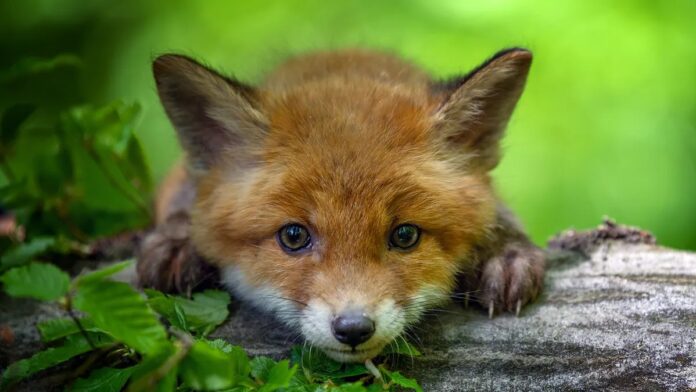The tiny, playful creatures often seen darting across fields or featured in heartwarming rescue videos are baby foxes. But what do we officially call them? The most common term is kit, though cub and pup are also used, depending on species and context. Understanding these terms, and the life cycle of these wild animals, sheds light on their behavior and why it’s best to observe them from a distance.
Зміст
The Science of Fox Families
Foxes belong to the Canidae family – the same group as wolves, coyotes, and domestic dogs. The “true foxes” are classified under the genus Vulpes, with the red fox (Vulpes vulpes ) being the most widespread wild canine globally. This means that a baby fox, regardless of the term used, is a member of a highly adaptable and intelligent family of predators.
From Helpless to Playful: The Early Stages
Baby foxes are born remarkably helpless: blind, deaf, and covered in soft, gray or brown fur – a far cry from the reddish coats most people associate with adults. At birth, they weigh a mere 1.8 to 5.3 ounces (50 to 150 grams). Litters typically consist of three to six kits, born in carefully chosen dens – often repurposed badger burrows or newly dug tunnels. The mother, called a vixen, takes primary responsibility, though the male, or dog fox, contributes by helping to feed the family.
Within 10 to 14 days, the kits’ eyes begin to open, initially revealing a striking blue hue that darkens to amber or brown with age. This marks the beginning of rapid development: they become more mobile, explore their surroundings, and transition to solid food – small mammals, insects, or even human scraps if living near populated areas – by 6 to 8 weeks.
Growing Up Wild: Independence and Survival
By around 3 months, young foxes are learning crucial survival skills from their parents and littermates. They remain in or near the den, honing their hunting instincts and adapting to their nocturnal lifestyle. Some stay with their families through winter, especially where food is abundant, while others venture out on their own by late summer or early fall.
Foxes are not domesticated animals. Their wild behaviors – digging, marking territory, and nocturnal habits – make them unsuitable as pets. Even those raised by humans remain unpredictable and require specialized care.
What to Do If You Find a Baby Fox
If you encounter a seemingly abandoned kit, the best course of action is to observe from a distance. The parents are often nearby, and human interference can complicate the situation. Wildlife rescue groups can provide guidance if necessary.
Foxes thrive across much of the Northern Hemisphere and parts of Australia. Catching a glimpse of kits near their dens at dawn or dusk is a reminder of the wild world thriving alongside us.
Enjoy their playful antics from afar, respecting their need for independence and their essential role in the ecosystem. Approaching or feeding them can disrupt their natural development and lead to dangerous encounters.
Ultimately, the terms kit, cub, and pup all refer to the same adorable, yet wild, creatures: the next generation of adaptable, resilient foxes
























